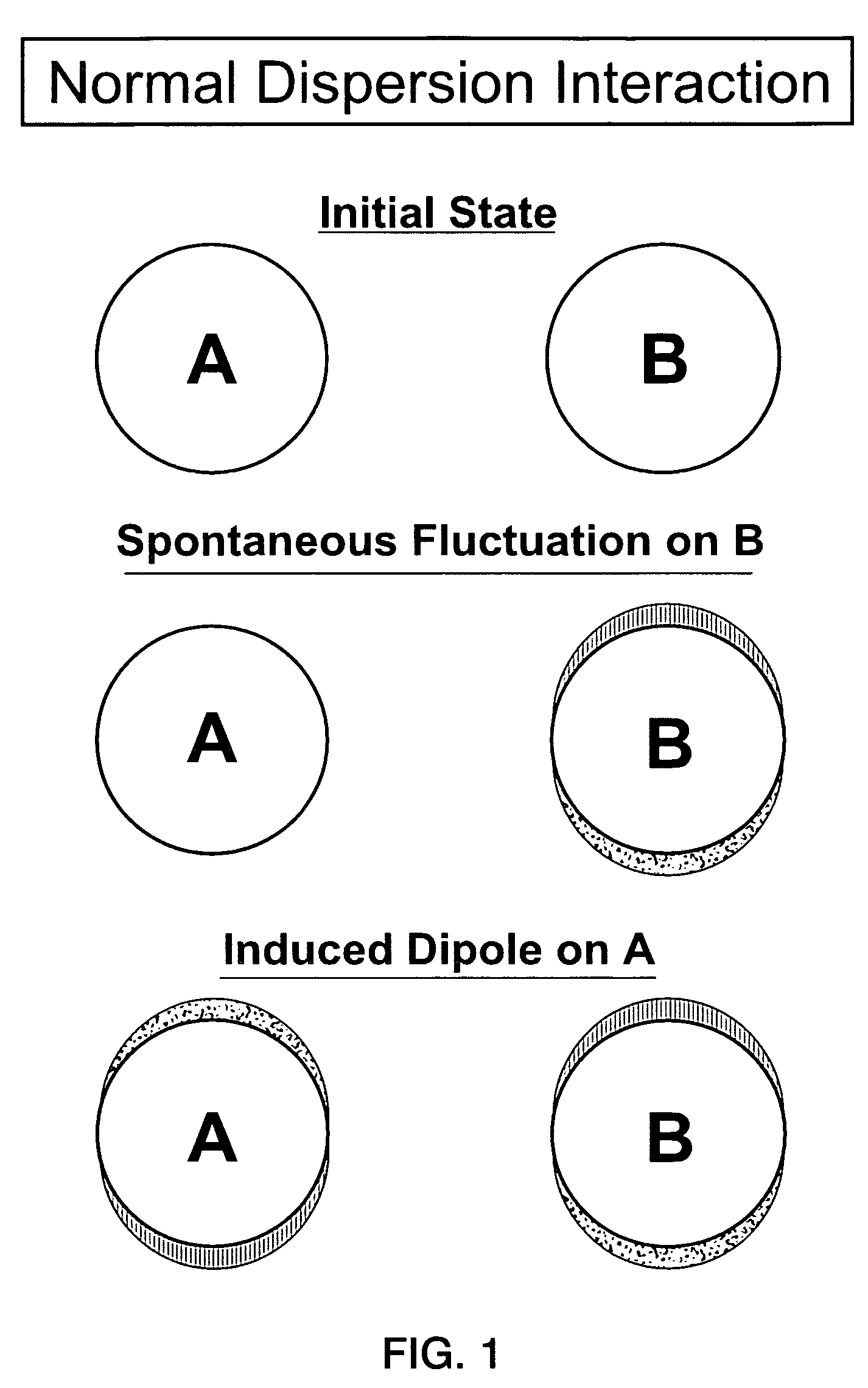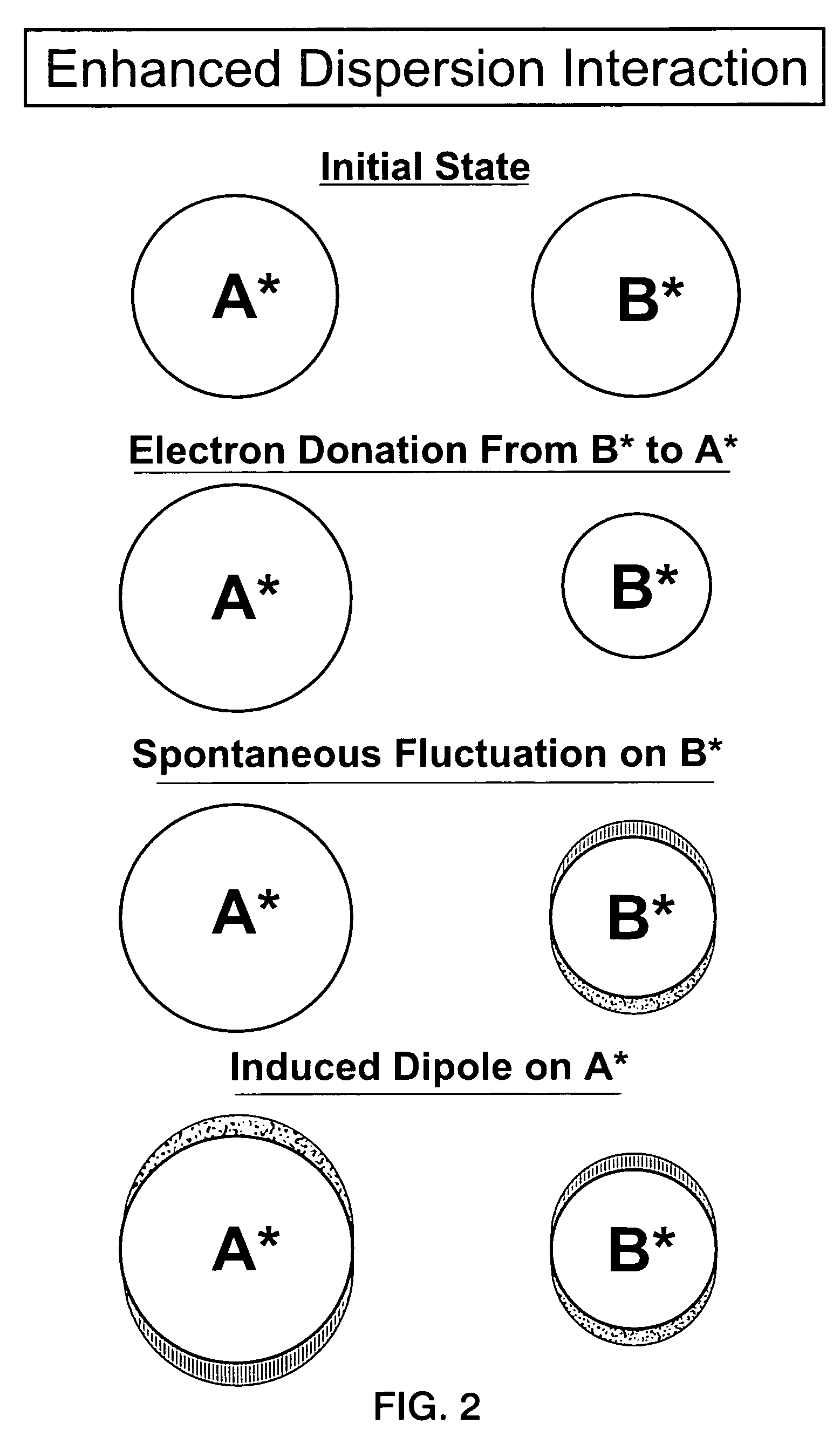Nanocomposites from stable dispersions of carbon nanotubes in polymeric matrices using dispersion interaction
a technology of carbon nanotubes and polymeric matrices, applied in the field of nanocomposites, can solve the problems of unable to achieve sufficient stable dispersions of cnts for nanocomposite applications, unable to create stable dispersions, and unable to meet the requirements of nanocomposite applications, etc., to achieve enhanced dispersion interaction, weak bound, and more polarization
- Summary
- Abstract
- Description
- Claims
- Application Information
AI Technical Summary
Benefits of technology
Problems solved by technology
Method used
Image
Examples
Embodiment Construction
should be read in the light of the accompanying Drawings, wherein:
[0017]FIG. 1 is a schematic illustrating a standard dispersion interaction (induced dipole-induced dipole interaction) according to the present invention, which is a weak intermolecular force arising from the attractive interaction between dipoles transciently induced between entities A and B; and
[0018]FIG. 2 is a schematic illustrating an enhanced dispersion interaction according to the present invention, wherein electron density transferred to entity A* from entity B* (electron donor) is more weakly bound and more polarizable. The spontaneous dipole formed on B* induces a larger dipole on A*, resulting in a greater dispersion interaction.
DETAILED DESCRIPTION OF THE INVENTION
[0019]The essence of this work is the formation of a dispersion interaction, especially an enhanced dispersion interaction between a host polymer matrix and the carbon nanotubes (CNTs) dispersed therein. The CNTs employed in the present invention...
PUM
| Property | Measurement | Unit |
|---|---|---|
| percent elongation at break | aaaaa | aaaaa |
| percent elongation at break | aaaaa | aaaaa |
| percent elongation at break | aaaaa | aaaaa |
Abstract
Description
Claims
Application Information
 Login to View More
Login to View More - R&D
- Intellectual Property
- Life Sciences
- Materials
- Tech Scout
- Unparalleled Data Quality
- Higher Quality Content
- 60% Fewer Hallucinations
Browse by: Latest US Patents, China's latest patents, Technical Efficacy Thesaurus, Application Domain, Technology Topic, Popular Technical Reports.
© 2025 PatSnap. All rights reserved.Legal|Privacy policy|Modern Slavery Act Transparency Statement|Sitemap|About US| Contact US: help@patsnap.com



